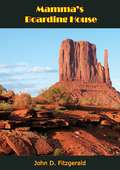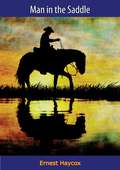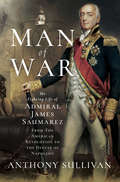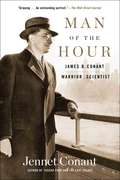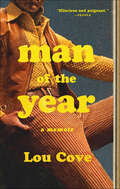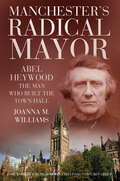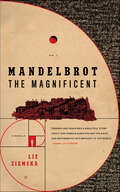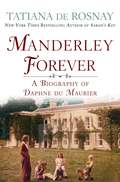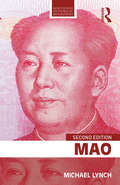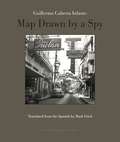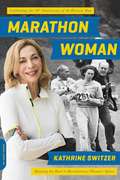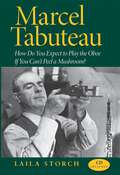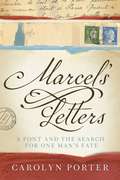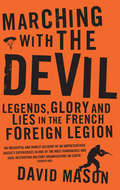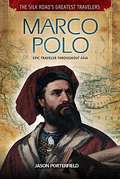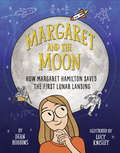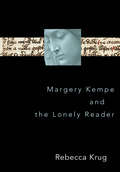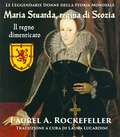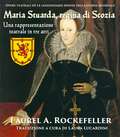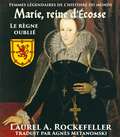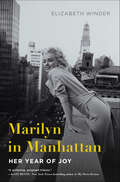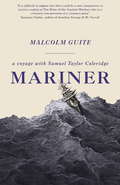- Table View
- List View
Mamma’s Boarding House
by John D. FitzgeraldMamma always had a way of treating everyone as a member of her own family, of giving warmth and comfort and love to people who had known little but loneliness and misfortune. And in the rugged Utah town of Adenville in the early years of this century, there were many who needed her compassion and generosity. So when Papa died and her own children were grown, it was natural for Mamma to open her home to others.Among her boarders were Sarah Martin, angular and tight-lipped, a schoolteacher who took to smoking cigars to win the man she loved...Alonzo Strang, a retired sea captain whose last heroic voyage was in a rowboat...the fastidious faro dealer, Floyd Thompson, who started going to church again so that he could stay at Mamma’s dining table...Mr. Hackett, Papa’s successor as editor of the Advocate, a bachelor so solitary he had almost forgotten how to live with others...and Judge Gibson, competing against the memory of a dead man for Mamma’s love.Continuing his family reminiscences from the best-selling Papa Married a Mormon, John D. Fitzgerald presents a spirited picture of a frontier community. Adenville was a town where a gunfighter shot out his last battle strapped to a lamppost...where the townspeople singing Rock of Ages saved a man from being lynched...where a red-headed artist won his sweetheart in a mad chase across the Utah desert...and where honest conniving staved off an Indian raid.There are moments of suspense as the townspeople rescue a child from his deranged grandfather...moments of hilarity as a pig named Beatrice the Beautiful plays the part of Cupid...moments of terror as a vicious bully menaces the entire town...and many scenes of warm and affectionate family life in Mamma’s boarding house.A poignant, humorous and exciting saga, illuminated by Mamma’s radiant generosity and tolerance, Mamma’s Boarding House is a worthy successor to the highly-praised Papa Married a Mormon.
Mamá Antula: La vida de la mujer que fundó la espiritualidad en la Argentina
by Ana María CabreraLa historia poco conocida de Mamá Antula, la mujer que fundó la espiritualidad en nuestro país. El 17 de septiembre de 2016, Mama Antula fue beatificada. El Vaticano confirmó su milagro por determinación del Papa Francisco. En 1904, la hermana María Rosa Vanina, religiosa de la congregación Hijas del Divino Salvador, a quien los médicos habían pronosticado la muerte, se recuperó sin explicación científica luego de que las otras monjas le rezaran a su fundadora. Mama Antula había arribado desde Santiago del Estero a Buenos Aires a fines del siglo XVIII, después de caminar descalza más de cuatro mil kilómetros para promover los ejercicios ignacianos tras la expulsión de los jesuitas. En 1795, con gran esfuerzo, fundó la Casa de Ejercicios Espirituales (ubicada en las calles Independencia y Salta), por donde pasaron figuras cruciales de nuestra independencia. Ana María Cabrera, apasionada desde siempre por las mujeres aguerridas y valientes de la historia argentina, investigó la vida de esta peregrina abnegada que llegó con su túnica y su cruz, rodeada de otras mujeres a las que, como a ella, acusaron de brujas y locas. Hoy la historia la redime: Mama Antula se encamina a ser la primera santa argentina. Este libro es una invitación a conocerla, a escucharla y a honrarla.
Man in the Saddle
by Ernest HaycoxA master storyteller in the great tradition of Zane Grey and Louis L’AmourMAN IN THE SADDLE—He fought his way back from hell—alone!The combine drove Owen Merritt from his land, branding him a coward and a killer while forcing him into hiding. But they had made one drastic, fatal mistake: they had forgotten to kill him!HIGH TRAILS AND FAST HORSESIt was the gray first-dawn, and Owen Merritt was off the trail, halted on the edge of timber. Ahead of him stood the cabin where the Skull outfit’s chuck-wagon crew still slept. He dropped from the saddle and drew his rifle from its boot.There would be five or six men in the cabin and in another fifteen minutes they would be stirring. Merritt steadied his rifle against the side of a small pine, knowing what he had to do. When he pulled the trigger of the Winchester he said goodbye to the flat country. It would be high trails and fast horses, beans and bacon over a quick campfire, and fade away.He took aim on the high corner of the cabin window and let go.BOUGH COUNTRY-BLOODTHIRSTY MENThe combine was too big for Owen Merritt—too powerful and too ruthless. They drove him off his land. They branded him coward and killer. Then they shamed him before the only woman he ever wanted. So he went into hiding. The only thing was that he couldn’t get rid of the disgrace that lodged in his gut. Or the hunger for the vast cattle lands he had lost. With no choice Owen Merritt went back, because those scum had made one drastic mistake: they forgot to kill him!ERNEST HAYCOX IS ONE OF THE GIANTS IN THE WESTERN GENRE, RANKING WITH BESTSELLING AUTHORS LOUIS L’AMOUR AND ZANE GREY.
Man of War: The Fighting Life of Admiral James Saumarez: From The American Revolution to the Defeat of Napoleon
by Anthony SullivanThe career of Guernsey-born Admiral James Saumarez reads like an early history of the Royal Navy. His first battle was against the American revolutionaries in 1775, but thereafter his main opponents were the French and the Spanish, and the first fighting ship he commanded, the eight-gun galley Spitfire, was involved in forty-seven engagements before being run aground.Rising through the ranks, Saumarez fought on land and at sea, and was involved in actions in the English Channel, being given command of a squadron of ships based at Guernsey. He served on HMS Victory, took part in the Battle of Cape St Vincent, the Blockade of Cadiz, and was with Nelson at the Battle of the Nile.Promoted to Rear Admiral, he led his ships at the battles of Algeciras and the Gut of Gibraltar. Saumarez was then dispatched into the Baltic, where he helped thwart Napoleons attempt at conquering Russia.So prominent was Saumarez during the late eighteenth and early nineteenth centuries, he was featured in the Hornblower novels and other fictional books, including Master and Commander. Tony Sullivan, however, tells the true story of one of the most remarkable individuals of the great days of sail, in the first biography of Saumarez for more than 170 years.
Man of the Hour: James B. Conant, Warrior Scientist
by Jennet ConantThe remarkable life of one of the most influential men of the greatest generation, James B. Conant—a savvy architect of the nuclear age and the Cold War—told by his granddaughter, New York Times bestselling author Jennet Conant.James Bryant Conant was a towering figure. He was at the center of the mammoth threats and challenges of the twentieth century. As a young eminent chemist, he supervised the production of poison gas in WWI. As a controversial president of Harvard University, he was a champion of meritocracy and open admissions. As an advisor to FDR, he led the interventionist cause for US entrance in WWII. During that war, Conant was the administrative director of the Manhattan Project, oversaw the development of the atomic bomb and argued that it be used against the industrial city of Hiroshima in Japan. Later, he urged the Atomic Energy Commission to reject the hydrogen bomb, and devoted the rest of his life to campaigning for international control of atomic weapons. As Eisenhower’s high commissioner to Germany, he helped to plan German recovery and was an architect of the United States’ Cold War policy. Now New York Times bestselling author Jennet Conant recreates the cataclysmic events of the twentieth century as her grandfather James experienced them. She describes the guilt, fears, and sometimes regret of those who invented and deployed the bombs and the personal toll it took. From the White House to Los Alamos to Harvard University, Man of the Hour is based on hundreds of documents and diaries, interviews with Manhattan Projects scientists, Harvard colleagues, and Conant’s friends and family, including her father, James B. Conant’s son. This is a very intimate, up-close look at some of the most argued cases of modern times—among them the use of chemical weapons, the decision to drop the bomb, Oppenheimer’s fate, the politics of post-war Germany and the Cold War—the repercussions of which are still affecting our world today.
Man of the Year: A Memoir
by Lou Cove"Hilarious and poignant" — People MagazineFor one 1970’s family, the center may not hold, but it certainly does fold.In 1978 Jimmy Carter mediates the Camp David Accords, Fleetwood Mac tops charts with Rumours, Starsky fights crime with Hutch, and twelve-year-old Lou Cove is uprooted from the Upper West Side of Manhattan to Salem, Massachusetts– a backwater town of witches, Puritans, and sea-captain wannabes. After his eighth move in a dozen years, Lou figures he should just resign himself to a teenage purgatory of tedious paper routes, school bullies, and unrequited lust for every girl he likes. Then one October morning an old friend of Lou’s father, free-wheeling (and free-loving) Howie Gordon arrives at the Cove doorstep from California with his beautiful wife Carly. Howie is everything Lou wants to be: handsome as a movie star, built like a god and in possession of an unstoppable confidence. Then, over Thanksgiving dinner, Howie drops a bombshell. Holding up an issue of Playgirl Magazine, he flips to the center and there he is, Mr. November in all his natural glory. Howie has his eye on becoming the next Burt Reynolds, and a wild idea for how to do it: win Playgirl’s Man of the Year. And he knows just who should manage his campaign. As Lou and Howie canvas Salem for every vote in town – little old ladies at bridge club, the local town witch, construction workers on break and everyone in between – Lou is forced to juggle the perils of adolescence with the pursuit of Hollywood stardom. Man of the Year is the improbable true story of Lou’s thirteenth year, one very unusual campaign, and the unexpected guest who changes everything.
Manchester's Radical Mayor: Abel Heywood, The Man who Built the Town Hall
by Jeremy Roberts Joanna M. WilliamsKnown in his day as the man who built the Town Hall, Abel Heywood was a leading Manchester publisher who entertained royalty at his home and twice became Mayor of Manchester. Yet before he found success his life was one of poverty and hardship, marked by a prison term in his pursuit of a free press. A campaigner for votes for all and social reform, Heywood attempted to enter Parliament twice, but his working-class origins and radical ideas proved an insurmountable obstacle. As councillor, alderman and mayor, he worked passionately and tirelessly to build the road, railway and tram systems, develop education, improve the provision of hospitals, museums and libraries, better the living conditions of the poor, and make Manchester a great city. Going beyond the experiences of one man, this book explores the wider political, cultural and class context of the Victorian city. It is an honest tale of rags to riches that will appeal to all who wish to discover more about the dramatic history of industrial Manchester and its people.
Mandelbrot the Magnificent: A Novella
by Liz Ziemska"Liz Ziemska has fashioned a beautiful story about one famous survivor and the magic and mathematics he&’s brought to the world." —Karen Joy FowlerMandelbrot the Magnificent is a stunning, magical pseudo-biography of Benoit Mandelbrot as he flees into deep mathematics to escape the rise of Hitler Born in Warsaw and growing up in France during the rise of Hitler, Benoit Mandelbrot found escape from the cruelties of the world around him through mathematics. Logic sometimes makes monsters, and Mandelbrot began hunting monsters at an early age. Drawn into the infinite promulgations of formulae, he sinks into secret dimensions and unknown wonders. His gifts do not make his life easier, however. As the Nazis give up the pretense of puppet government in Vichy France, the jealousy of Mandelbrot&’s classmates leads to denunciation and disaster. The young mathematician must save his family with the secret spaces he&’s discovered, or his genius will destroy them.
Manderley Forever: A Biography of Daphne du Maurier
by Tatiana De Rosnay Sam TaylorThe nonfiction debut from beloved international sensation and #1 New York Times bestselling author Tatiana de Rosnay: her bestselling biography of novelist Daphne du Maurier. “It's impressive how Tatiana was able to recreate the personality of my mother, including her sense of humor. It is very well written and very moving. I’m sure my mother would have loved this book.” — Tessa Montgomery d’Alamein, daughter of Daphné du Maurier, as told to Pauline Sommelet in Point de Vue. As a bilingual bestselling novelist with a mixed Franco-British bloodline and a host of eminent forebears, Tatiana de Rosnay is the perfect candidate to write a biography of Daphne du Maurier. As an eleven-year-old de Rosnay read and reread Rebecca, becoming a lifelong devotee of Du Maurier’s fiction. Now de Rosnay pays homage to the writer who influenced her so deeply, following Du Maurier from a shy seven-year-old, a rebellious sixteen-year-old, a twenty-something newlywed, and finally a cantankerous old lady. With a rhythm and intimacy to its prose characteristic of all de Rosnay’s works, Manderley Forever is a vividly compelling portrait and celebration of an intriguing, hugely popular and (at the time) critically underrated writer.
Mao (Routledge Historical Biographies)
by Michael LynchMichael Lynch’s second edition of Mao examines the life of this controversial figure. Opening with a detailed chronology, it delves into Mao’s younger years and tracks his gradual rise to power, with a chapter dedicated to the cult status that surrounded him. Through a wealth of primary and secondary sources and a balanced consideration of the conflicting views that surround Mao’s leadership, this book provides a thorough exploration of Mao’s political and private life. Key features of the second edition include a detailed analysis of the Long March, an account of Sino-Japanese relations and an assessment of Mao’s ongoing legacy. This biography will be essential reading for anyone interested in Mao and the politics of twentieth-century China.
Map Drawn by A Spy
by Guillermo Cabrera Infante Mark FriedFound in an envelope in Guillermo Cabrera Infante's house after his death in 2005, Map Drawn by a Spy is the world-renowned writer's autobiographical account of the last four months he spent in his country. In 1965, following his mother's death, Infante returns to Cuba from Brussels, where he is employed as a cultural attaché at the Cuban embassy. When a few days later his permission to return to Europe is revoked, Infante begins a period of suspicion, uncertainty, and disillusion. Unable to leave the country, denied access to party officials, yet still receiving checks for his work in Belgium, Infante discovers the reality of Cuba under Fidel Castro: imprisonment of homosexuals, silencing of writers, the closing of libraries and newspapers, and the consolidation of power. Both lucid and sincere, Map Drawn by a Spy is a moving portrayal of a fractured society and a writer's struggles to come to terms with his national identity.
Marathon Woman: Running the Race to Revolutionize Women's Sports
by Kathrine SwitzerIn 1967, Kathrine Switzer was the first woman to officially run what was then the all male Boston Marathon, infuriating one of the event's directors who attempted to violently eject her. In what would become an iconic sports image, Switzer escaped and finished the race. This was a watershed moment for the sport, as well as a significant event in women's history.Including updates from the 2008 Summer Olympics, the paperback edition of Marathon Woman details the life of an incredible, pioneering athlete, and the lasting effect she's had on women's sports. Switzer's energy and drive permeate the pages of this warm, witty memoir as she describes everything from the childhood events that inspired her to succeed to her big win in the 1974 New York City Marathon, and beyond.
Marcel Tabuteau: How Do You Expect to Play the Oboe If You Can't Peel a Mushroom?
by Laila StorchLaila Storch is a world-renowned oboist in her own right, but her book honors Marcel Tabuteau, one of the greatest figures in twentieth-century music. Tabuteau studied the oboe from an early age at the Paris Conservatoire and was brought to the United States in 1905, by Walter Damrosch, to play with the New York Symphony Orchestra. Although this posed a problem for the national musicians' union, he was ultimately allowed to stay, and the rest, as they say, is history. Eventually moving to Philadelphia, Tabuteau played in the Philadelphia Orchestra and taught at the Curtis Institute of Music, ultimately revamping the oboe world with his performance, pedagogical, and reed-making techniques.In 1941, Storch auditioned for Tabuteau at the Curtis Institute, but was rejected because of her gender. After much persistence and several cross-country bus trips, she was eventually accepted and began a life of study with Tabuteau. Blending archival research with personal anecdotes, and including access to rare recordings of Tabuteau and Waldemar Wolsing, Storch tells a remarkable story in an engaging style.
Marcel's Letters: A Font and the Search for One Man's Fate
by Carolyn PorterFinalist for the 2018 Minnesota Book AwardA graphic designer’s search for inspiration leads to a cache of letters and the mystery of one man’s fate during World War II.Seeking inspiration for a new font design in an antique store in small-town Stillwater, Minnesota, graphic designer Carolyn Porter stumbled across a bundle of letters and was immediately drawn to their beautifully expressive pen-and-ink handwriting. She could not read the letters-they were in French-but she noticed all of them had been signed by a man named Marcel and mailed from Berlin to his family in France during the middle of World War II.As Carolyn grappled with designing the font, she decided to have one of Marcel’s letters translated. Reading it opened a portal to a different time, and what began as mere curiosity quickly became an obsession with finding out why the letter writer, Marcel Heuzé, had been in Berlin, how his letters came to be on sale in a store halfway around the world, and, most importantly, whether he ever returned to his beloved wife and daughters after the war.Marcel’s Letters is the incredible story of Carolyn’s increasingly desperate search to uncover the mystery of one man’s fate during WWII, seeking answers across Germany, France, and the United States. Simultaneously, she continues to work on what would become the acclaimed P22 Marcel font, immortalizing the man and his letters that waited almost seventy years to be reunited with his family.
Marching with the Devil: Legends, Glory and Lies in the French Foreign Legion
by David Mason`Since its creation in 1831, the French Foreign Legion has become the stuff of myth, fiction and dreams... Anyone thinking of joining up would be well advised to read this book first? - The Sun HeraldA real-life boy's own adventure, Marching With The Devil is an account of David Mason's five years in the infamous French Foreign Legion.David Mason graduated from the Australian National University with a law degree and an honours degree. Like those around him, he could easily have settled for a life of share portfolios, good suits, new cars and big houses. But David wanted more ? he wanted a challenge, an adventure, something beyond the ordinary that would test him physically and mentally. He looked around to see what he could do. Working in an open-cut mine . . . done that. Running a marathon . . . hmm, not hard enough. Climbing Everest . . . maybe? Joining the French Foreign Legion . . . perfect!Marching With The Devil is the gripping true story of what happened when an Australian lawyer left his comfortable existence and joined the legendary French Foreign Legion. He stayed for five years and served time in the elite Parachute Regiments. With the motto 'March or Die', the legion has a history of pain, grief and glory. David Mason takes us behind the myth to reveal exactly what happens: the adventure, the danger, the drinking, the fighting and the lies that sustain the legend.fore the final choice must be made.`Remarkable... It's hard not to think it a shame that a man of such obvious gifts should have wasted them on the legion, just so as not to have to feel like a quitter, even if this book was the result? - The Age`Marching with the Devil quickly turns into an insightful and honest account of an unpretentious Aussie's experiences in one of the most ramshackle and soul-destroying military organisations on Earth? - Courier Mail`A strangely compulsive read about one man?s quest for self knowledge? - Men's Health Magazine`Mason left a comfortable life in Australia to test himself in the crucible of the legion, and he writes about it 20 years after his service time necessary to give himself the distance and context he needed to write about an extraordinary and painful experience? - Sunday Mail Brisbane
Marco Polo: Epic Traveler Throughout Asia (The Silk Road's Greatest Travelers)
by Jason PorterfieldUpon returning to his native Venice from a nearly 25-year journey through Asia, Marco Polo fueled the Western imagination with his tales about the splendors of the East. This lively biography follows Marco’s intrepid family as they navigate the spice stalls, caravansaries, and dangers that once populated the Silk Road and enter Kublai Khan’s Mongol court in China, where they served as advisors. Readers will learn about the Polos’ importance as cultural emissaries at a time of limited global exchange and how Marco’s account of their travels—whether fact or fiction—heralded the later golden age of exploration.
Margaret and the Moon
by Dean RobbinsA true story from one of the Women of NASA!Margaret Hamilton loved numbers as a young girl. She knew how many miles it was to the moon (and how many back). She loved studying algebra and geometry and calculus and using math to solve problems in the outside world. Soon math led her to MIT and then to helping NASA put a man on the moon! She handwrote code that would allow the spacecraft&’s computer to solve any problems it might encounter. Apollo 8. Apollo 9. Apollo 10. Apollo 11. Without her code, none of those missions could have been completed. Dean Robbins and Lucy Knisley deliver a lovely portrayal of a pioneer in her field who never stopped reaching for the stars.
Margery Kempe and the Lonely Reader
by Rebecca KrugSince its rediscovery in 1934, the fifteenth-century Book of Margery Kempe has become a canonical text for students of medieval Christian mysticism and spirituality. Its author was a fifteenth-century English laywoman who, after the birth of her first child, experienced vivid religious visions and vowed to lead a deeply religious life while remaining part of the secular world. After twenty years, Kempe began to compose with the help of scribes a book of consolation, a type of devotional writing found in late medieval religious culture that taught readers how to find spiritual comfort and how to feel about one's spiritual life. In Margery Kempe and the Lonely Reader, Rebecca Krug shows how and why Kempe wrote her Book, arguing that in her engagement with written culture she discovered a desire to experience spiritual comfort and to interact with fellow believers who also sought to live lives of intense emotional engagement.An unlikely candidate for authorship in the late medieval period given her gender and lack of formal education, Kempe wrote her Book as a revisionary act. Krug shows how the Book reinterprets concepts from late medieval devotional writing (comfort, despair, shame, fear, and loneliness) in its search to create a spiritual community that reaches out to and includes Kempe, her friends, family, advisers, and potential readers. Krug offers a fresh analysis of the Book as a written work and draws attention to the importance of reading, revision, and collaboration for understanding both Kempe’s particular decision to write and the social conditions of late medieval women’s authorship.
Maria Stuarda regina di Scozia: il regno dimenticato
by Laurel A. Rockefeller Traduzione a cura di Laura LucardiniLa regina Maria Stuarda è stata una delle donne più amate e controverse della storia scozzese. Nipote di re Giacomo IV e di sua moglie Margherita Tudor, la posizione di Maria quale erede apparente al trono inglese e la violenza della Riforma scozzese fanno da sfondo a una delle vite più drammatiche e incomprese del 16° secolo. Maria regina di Scozia racconta la vera storia di Maria, concentrandosi principalmente sul suo regno, celebrando la sua vita più che la sua morte e dimostrandoci come Maria fosse una donna che precorreva i suoi tempi. Una biografia della serie "Le leggendarie donne della storia mondiale".
Maria Stuarda, regina di Scozia: una rappresentazione teatrale in tre atti
by Laurel A. Rockefeller Laura LucardiniLa tragica storia della regina Maria Stuarda diventa un'opera teatrale in questa coinvolgente tragedia che ne racconta la vita, gli amori e il regno. Un'opera perfetta per le scuole e le compagnie amatoriali. Include bibliografia e cronologia degli eventi. Durata: 60-80 minuti.
Marie Curie for Kids: Her Life and Scientific Discoveries, with 21 Activities and Experiments
by Amy O'QuinnMarie Curie, renowned for her work on radioactivity, was the first woman to win a Nobel Prize, the first person to win in two fields (chemistry and physics), and the first woman to hold a chair position at the Sorbonne. Marie Curie for Kids details Curie's remarkable life, from her childhood under a repressive czar in Poland to her tireless work supporting herself through college to meeting her ideal match in scientist Pierre Curie to her revolutionary research. Kids learn how Curie quietly flouted societal norms, working in full partnership with her husband while also teaching and raising two daughters. Scientific concepts are presented in a clear, accessible way, and a range of activities--from making Polish pierogies to exploring magnetism to using electrolysis to split water--allow for exploration of Curie's life, times, and work.
Marie, reine d'Écosse : le règne oublié
by Laurel A. Rockefeller Agnes MetanomskiLa reine Marie Stuart était une des femmes les plus aimées et les plus controversées de l’histoire de l’Ecosse. Petite-fille du roi Jacques IV et de sa femme Marguerite Tudor, le statut de la reine Marie en tant qu’héritière présomptive du trône, ajouté à la violence de la reforme écossaise, créa la prémisse pour une des vies les plus dramatiques et les moins comprises du 16e siècle. Marie, reine d’Ecosse raconte la véritable histoire de Marie, se concentrant principalement sur son règne en tant que reine d’Ecosse, célébrant sa vie plus que sa mort et nous montrant pourquoi elle était vraiment une femme en avance sur son temps. Une biographie narrative de la série des Femmes Légendaire de l’Histoire du Monde.
Marilyn in Manhattan: Her Year of Joy
by Elizabeth WinderA city, a movie star, and one magical year.In November of 1954 a young woman dressed plainly in a white oxford, dark sunglasses and a black pageboy wig boards a midnight flight from Los Angeles to New York. As the plane’s engines rev she breathes a sigh of relief, lights a cigarette and slips off her wig revealing a tangle of fluffy blonde curls. Marilyn Monroe was leaving Hollywood behind, and along with it a failed marriage and a frustrating career. She needed a break from the scrutiny and insanity of LA. She needed Manhattan. In Manhattan, the most famous woman in the world can wander the streets unbothered, spend hours at the Met getting lost in art, and afternoons buried in the stacks of the Strand. Marilyn begins to live a life of the mind in New York; she dates Arthur Miller, dances with Truman Capote and drinks with Carson McCullers. Even though she had never lived there before, in New York, Marilyn is home.In Marilyn in Manhattan, the iconic blonde bombshell is not only happy, but successful. She breaks her contract with Fox Studios to form her own production company, a groundbreaking move that makes her the highest paid actress in history and revolutionizes the entertainment industry. A true love letter to Marilyn, and a joyous portrait of a city bursting with life and art, Marilyn in Manhattan is a beautifully written, lively look at two American treasures: New York and Marilyn Monroe, and sheds new light on one of our most enduring icons.
Mariner: A Voyage with Samuel Taylor Coleridge
by Reverend Dr Malcolm Guite'The story of Coleridge's life does undoubtedly echo that of his poem; this is a book that provides rewarding rereadings of both' - The Sunday TimesA new biography of Samuel Taylor Coleridge, shaped and structured around the story he himself tells in his most famous poem, 'The Rime of the Ancient Mariner'. Though the 'Mariner' was written in 1797 when Coleridge was only twenty-five, it was an astonishingly prescient poem. As Coleridge himself came to realise much later, this tale - of a journey that starts in high hopes and good spirits, but leads to a profound encounter with human fallibility, darkness, alienation, loneliness and dread, before coming home to a renewal of faith and vocation - was to be the shape of his own life. In this rich new biography, academic, priest and poet Malcolm Guite draws out how with an uncanny clarity, image after image and event after event in the poem became emblems of what Coleridge was later to suffer and discover. Of course 'The Rime of the Ancient Mariner' is more than just an individual's story: it is also a profound exploration of the human condition and, as Coleridge says in his gloss, our 'loneliness and fixedness'. But the poem also offers hope, release, and recovery; and Guite also draws out the continuing relevance of Coleridge's life and writing to our own time.'Forcefully and convincingly argued' - The Telegraph
Mariner: A Voyage with Samuel Taylor Coleridge
by Reverend Dr Malcolm Guite'The story of Coleridge's life does undoubtedly echo that of his poem; this is a book that provides rewarding rereadings of both' - The Sunday TimesA new biography of Samuel Taylor Coleridge, shaped and structured around the story he himself tells in his most famous poem, 'The Rime of the Ancient Mariner'. Though the 'Mariner' was written in 1797 when Coleridge was only twenty-five, it was an astonishingly prescient poem. As Coleridge himself came to realise much later, this tale - of a journey that starts in high hopes and good spirits, but leads to a profound encounter with human fallibility, darkness, alienation, loneliness and dread, before coming home to a renewal of faith and vocation - was to be the shape of his own life. In this rich new biography, academic, priest and poet Malcolm Guite draws out how with an uncanny clarity, image after image and event after event in the poem became emblems of what Coleridge was later to suffer and discover. Of course 'The Rime of the Ancient Mariner' is more than just an individual's story: it is also a profound exploration of the human condition and, as Coleridge says in his gloss, our 'loneliness and fixedness'. But the poem also offers hope, release, and recovery; and Guite also draws out the continuing relevance of Coleridge's life and writing to our own time.'Forcefully and convincingly argued' - The Telegraph
